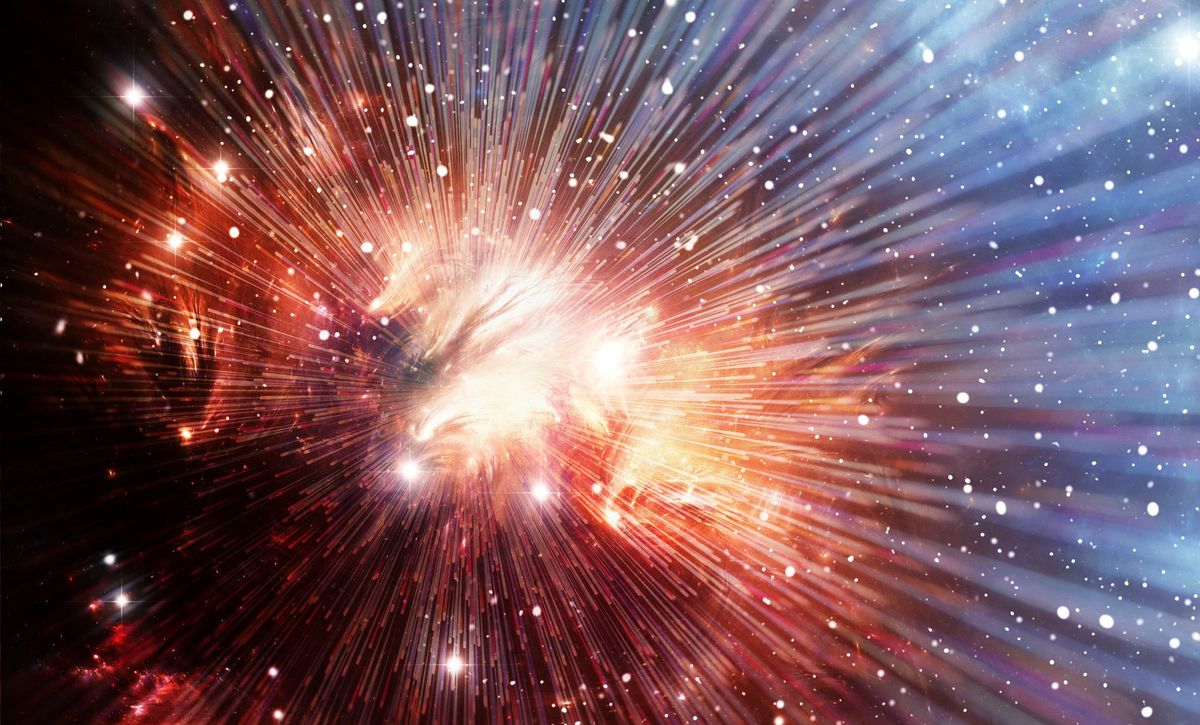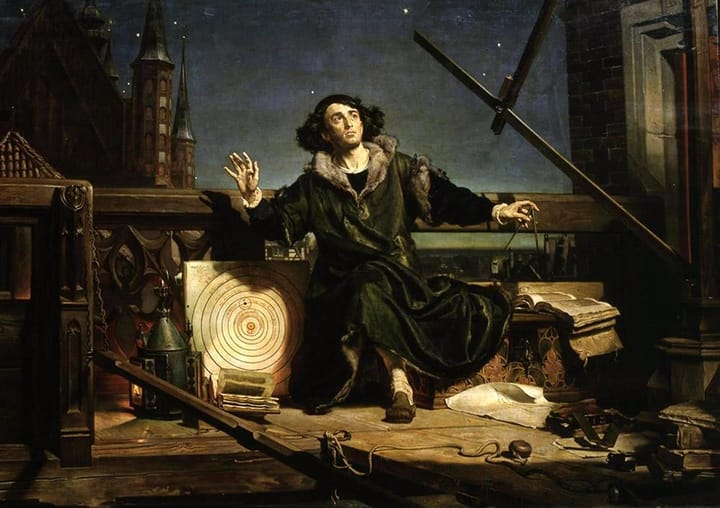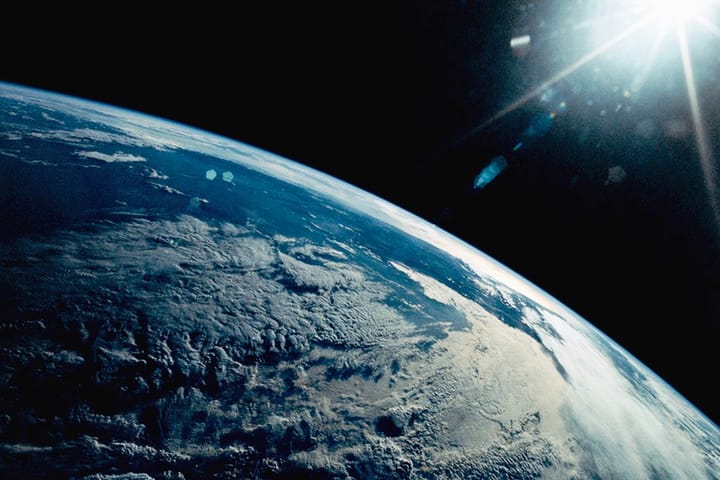What's been happening? (Part 1)

With these two posts I am going to try and give a good answer to the question of "what's been happening?". It can be difficult to get an overall picture of how things became the way they are. That is what these posts attempt to provide.
Part 1 is on prehistory and starts with the big bang. The second part will be on human history and cover some of the major events in our story that continue to echo in the present.
Some sections, in particular the beginning, are speculation. For example, we do not really know what happened in the first moments of the big bang and a new breakthrough in physics could upend our understanding.
I am not a historian and I hope that this account at least gives a rough outline of what our species has been up to. If there is something you really think should have been included that I missed, it is likely I am just unaware of it or its importance and I would really appreciate you leaving it in a comment.
The birth of heaven
Some say that at the start of time there was only a single particle and a single force. Then, for reasons we still don’t understand, the universe expanded. As it expanded, it cooled, and as it cooled, the single force cracked. First into two pieces, then three and finally into the four forces we have today.
That was 14 billion years before the current era.
Like dew collecting on blades of grass, the universe condensed in many ways. First, the centres of atoms formed: the nuclei. Then the first elements were born, hydrogen and helium. Small variations in this great gas cloud tugged on their neighbours. They did this using the first-born force, gravity. Like a soap film, the gas arranged itself along filaments between great voids. Along these filaments, like droplets on a string, great swirling masses of gas formed. Today we know them as galaxies. It is thought there are at least 100 billion in the universe. One of these, our one, we call the milky-way.
Within these galaxies the gas was also rolling up under gravity. As more gas piled into an area, another of the 4 forces became relevant to our story, the strong force.
To know the strong force, I must introduce its sibling, the electromagnetic force. This is the force that causes the repulsion between like charges or sides of a magnet and the attraction of opposites. You may never have thought about it, but if positive and positive repel, and the nucleus only has neutrons (which are neutrally charged) and protons (which are positively charged), why does the nucleus not blow itself apart?
This is the work of the strong force. If you bring two positive protons close enough they will snap together with tremendous force and release energy.
As the gas piles grew, the pressure from gravity increased in their centres. Eventually the atoms in the cloud were forced so close to each other that the strong force snapped them together, releasing energy. The first nuclear fires had been lit. Their light poured out into the darkness and we named them stars.
The number of stars in our galaxy, much like galaxies in our universe, is at least 100 billion.
During the big bang, only the first 3 of the 118 elements on the periodic table were created. Stars are the nuclear foundries in which the other elements were made. In fact, forcing elements together to create new larger ones is the source of the star’s energy. For most of a star’s life, this is hydrogen being combined into helium. However, as it runs out of fuel, the outward pressure from the nuclear fire is no longer enough to balance the crushing inward force of gravity. Atoms are forced closer together and new ones are created. In this way, the first 26 elements are forged.
The largest element we find on Earth is Plutonium, the 94th in the table. The higher elements, such as Plutonium, are created during the violent deaths of stars. An iron core forms in the centre, and without any way to release energy, the core is crushed under gravity. As there is no more radiation pressure, the gas around it rushes inwards. The core implodes under the pressure and smashes apart into the oncoming gas. This creates an explosion that can be brighter than an entire galaxy: a supernova. It is in these violent explosions that the other elements are created. If you are wearing gold or silver right now, those atoms were all formed in such an explosion.
Out of the ash of the first fires, new stars were born. One of those newly kindled was ordinary in every way, save one. It would come to be called the sun. This star was born 5 billion years before today.
Only 0.2% of the mass of our solar system is outside the sun. Much like stars and galaxies, small differences in dust density grew and merged. Asteroids, comets and planets formed slowly but surely. In time there were four rocky planets close to the sun and four gaseous giants further away along with thousands of smaller bodies, including the erstwhile planet Pluto.
The third rock away from the sun came to be the most precious object we know of in the universe. It would become our blue and green jewel and we named it the Earth.
The creation of man
Our jewel was created in violence. Great rocks smashed together producing tremendous heat. All was molten and, in this sludge, the heaviest sank below the lightest. Iron sank to the world’s centre creating a metal core.
It is thought that at some time soon after this, a great rock collided with the Earth. The material on the surface was ejected into space where it collected together and stays to this day as the moon.
As the Earth aged and cooled, the surface solidified. The crust was formed. In our time still, the rock under the crust is molten. This is not only due to the energy of those first collisions, the heat of the depths is also caused by the last of the four sibling forces. The weak force.
The weak force, along with the strong and electromagnetic, is responsible for radioactive decay. When an element is large and unstable it can release energy and become a smaller element. The radioactive material inside the core is continually releasing energy in this way, ensuring that the temperature at the centre of the Earth is as hot as the surface of the sun.
Like a pan full of boiling water, the heat at the depths caused molten rock to rise to the crust, where it cooled and sank down. These convection currents broke the crust into pieces and moved them around like a layer of oil on the surface of that boiling water. These are the tectonic plates. Responsible for earthquakes, continental drift and vast mountain ranges such as the Himalayas.
In these early times, the earth was too hot for water and there was no atmosphere. Eventually, gas escaped from inside the planet. This created a sky, but one that did not yet contain oxygen. One day the temperature dropped below the boiling point of water and it began to rain.
It rained for millions of years. It rained so long that the oceans formed. Most of the water on earth today was from the first rain.
And then a miracle occurred. In those young seas a molecule came to be that could recreate itself. Life had begun.
Natural selection meant that those molecules which were more successful at replicating themselves survived and created more copies of themselves. For 2 billion years this process continued, creating single celled creatures including the race that has had the greatest impact on our planet of all, cyanobacteria or blue-green algae.
These organisms greedily devoured the C02 in the atmosphere and expelled toxic oxygen as a waste product. Oxygen is reactive, which makes it a great fuel for the complex beings that were to come, but also dangerous. It is no coincidence that rocket fuel is oxygen and hydrogen. The increasing presence of this substance in the atmosphere is thought to have caused a mass extinction among the anaerobic organisms of that period.
Perhaps due to the new abundant fuel in the atmosphere, multicellular life emerged. After this came the first plants. About 500 million years ago, the first arthropods roamed the sea floor. Then came fish. Some of these wandered onto the land and became reptiles. Those reptiles would come to dominate the world for 200 million years as the dinosaurs.
As these terrible lizards roamed the Earth, a small furry, shrew-like creature came to be. It gave birth to live young without using an egg. It was the first mammal.
Then 65 million years ago, by providence, a rock rained from the sky and destroyed the dinosaurs. It was 10 km across and hit modern day Mexico. The dust from its impact clogged up the sky and none of the life-giving rays from the sun could make it through. First the plants died, then the animals. In the darkness our ancestors managed to hold out. The age of mammals had begun and the first flowers bloomed.
They lost control of the planet, but a few of the dinosaurs survive to this day. They are the birds.
About 50 million years ago the first monkeys appeared, after another 25 million years, the first apes. Then 7 million years ago, a type of ape that walked on its hind legs came into existence. The brains of these creatures grew, perhaps connected to their upright posture, although we cannot say for sure. Three and a half million years ago, the first stone tools were constructed.
Using their tools, these apes began to master their surroundings and climb to the top of the food chain. After another million and a half years, the wandering creatures spread away from the African motherland and discovered fire.
Possibly due to their increasingly complex social relations, the brains of these beings continued to develop until 100,000 years ago; modern man, homo sapiens, emerged.
For the past 2 million years the world has been in an ice age. Slight variations in our orbit have led to glaciers expanding and retreating across the world. It seems the general pattern is 100,000 years of ice followed by 10,000 years of warmth.
We are in just such a warm (interglacial period) today. At the height of the last glacial period (confusingly also called the ice age), 20,000 years ago, the oceans were much lower than they are today. This allowed man to spread to the furthest corners of the world. From his starting point in eastern Africa, he arrived at the bottom of South America.
In the depths of the cold, we hunted mammoths, honoured our dead and made the first alliance with another of the Earth’s creatures. Man cannot survive on lean meat alone, he needs fats. So much of this meat may go to waste. Another creature could eat this though. Cautiously, wolf and man came to each other’s aid. We found our oldest friend and hunting partner. The first domesticated animal was born.
At this time, we were not alone. Other intelligent creatures, such as Neanderthal, walked the land. We may never see why through the fog of time, but either through integration or genocide, by the end of the ice age it was only we who remained.



Comments ()